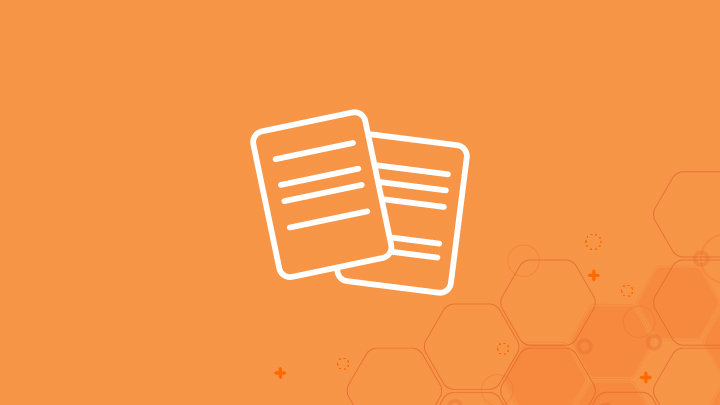When I was in middle school in the early 2000s, I recall one of my teachers lamenting the increasing popularity of cell phones: “People used to joke that we have to learn math because no one is going to carry a calculator around with them, but now with cell phones, everyone WILL carry a calculator everywhere. People aren’t going to understand how to figure out how much to tip at a restaurant anymore, they will just use their phone!”
Little did we know, in just a few short years, the onset of smartphones would change the landscape of technology. Now we could use our phones not just to solve simple calculations, but to use the internet to research information and answer complicated questions in seconds.
This quick access to information and tools lead some teachers to view emerging technology as a threat to their profession–a lazy replacement for learning how to do things the “right way.” But what if, instead of seeing new tech as an adversary, teachers embraced new technology as a time-saving tool? One that could help students and teachers achieve a higher level of understanding and proficiency, in a shorter amount of time?
Today, just like when smartphones were introduced, we are in the midst of a new wave of technological advances. Public access to artificial intelligence tools, or AI, is increasing and growing in popularity. At the forefront of the AI conversation is ChatGPT, a tool that provides formulated responses to complex questions asked by users. ChatGPT can, for example, write essays, poems, computer code, and more. As with most paradigm-shifting changes, there exists a lot of “either/or” thinking among educators: either “I accept that AI is going to make my subject area obsolete” or “I need to ban the technology and diligently monitor my students’ work to ensure they do not use AI tools.” This either/or thinking gets us stuck and does not provide a meaningful, productive path forward.
This technology is new to the general public, and it will continue to evolve and change in ways we don’t yet know. Rather than responding reactively, it may be more beneficial for educators and school leaders to use this as a moment to reflect critically about our subject areas, what we teach, and how we teach it. Can AI tools help us be better educators?
Continue reading to think about how schools might approach the early-stages of artificial intelligence technology.
Explore AI Tools Independently and with your Students
If you haven’t already, a necessary first step is simply to explore AI tools. Hop on ChatGPT and ask it to write an essay you recently assigned, explain a mathematical concept at the age-level of your students, and write an upcoming lesson plan. Without first hand experience, it’s impossible to understand the tool and its possibilities and limitations for your teaching and content area.
When you have gained some personal familiarity, you could then explore tools like ChatGPT with your students. Rather than making these emerging technologies an elephant in the room, you can demystify the tools by creating structured opportunities for collaborative exploration.
For an English teacher, for example, this might mean that after students have finished a critical analysis essay about a poem, they ask ChatGPT to write the same essay. The class could then comparatively analyze the student-written vs. the ChatGPT-written essays, and then consider together how one might use ChatGPT in the essay writing process.
Creating guided processes for students to practice using AI tools helps them develop a critical lens through which to navigate the technology. Because these tools are so new, there is an opportunity to support students in developing a more ethically-conscious and analytical approach to their use.
Create Flexible Guidelines for its Use
Attempts to ban AI technologies in schools will likely create more problems than solutions. Not only will students likely find ways around such bans, but they could also put students at a disadvantage. As Stephen Brewer, BetterLesson’s Vice President of Engineering, shared, “Districts shouldn’t look at this as an adversary and figure out how to fight this; instead, they should ask how do we look at this as a new tool to prepare students for a new world that’s coming as a result of this.”
In lieu of banning AI technology altogether, consider how you might create guidelines for how and when students use these tools.
In a social studies class, if students were writing letters to elected officials in their community, perhaps the assignment guidelines could include using an AI tool to generate an outline for their letters. Students could then annotate the changes they want to make to the AI-generator outlined or detail why they choose to keep the outline as is.
Structured ways of utilizing these resources give students opportunities to practice how AI tools can support, rather than replace, their academic activities.
Improve Accessibility and Accommodations
Differentiating instruction and providing accessible educational materials for students with IEPs and students whose first language is not English can be incredibly time consuming. Teachers can save substantial time by utilizing AI tools to improve accessibility and accommodations.
For instance, AI tools can provide real-time captions for video and audio content, which can be a huge support for students with hearing impairments and ESL students. AI tools can also provide individualized learning materials by analyzing student data and suggesting appropriate readings, videos, and assessment questions.
By utilizing AI resources to provide students with necessary accommodations, teachers can also free up more of their time to focus on providing meaningful student feedback, planning curriculum, connecting with families, and more.
Ask Yourself Tough Questions
Just like the introduction of technologies of the past–from calculators to online search engines–this moment invites us as educators and school leaders to ask some hard questions:
What skills, content, and methods of teaching are relevant and/or necessary in the context of emerging AI technologies?
How can we balance utilizing AI technologies with supporting students’ critical thinking and creativity?
How can we apply an equity lens through our approach to AI tools?
Many educators and school leaders are feeling anxious and overwhelmed with the sudden introduction of AI tools to the general public. This is completely understandable. The landscape of learning and education is shifting, and that can feel uncomfortable, even scary.
Remember that you don’t need to have all the answers for how, when, and whether to use AI resources in the classroom. Working through these tough questions, individually and as a district, can help imagine a path forward together.
Interested in learning about how BetterLesson can support your district in this new era of technology? Schedule a call today!
Get in Touch







